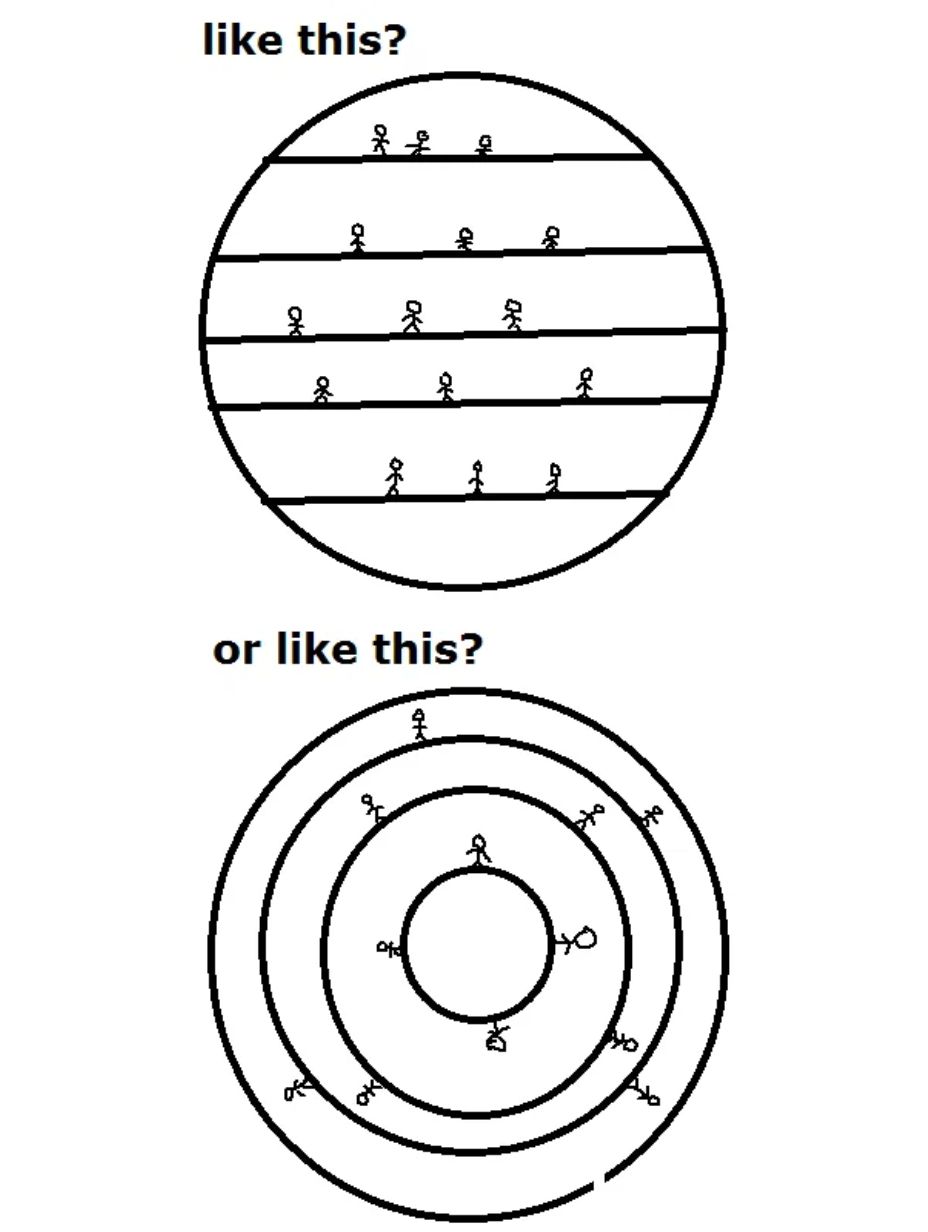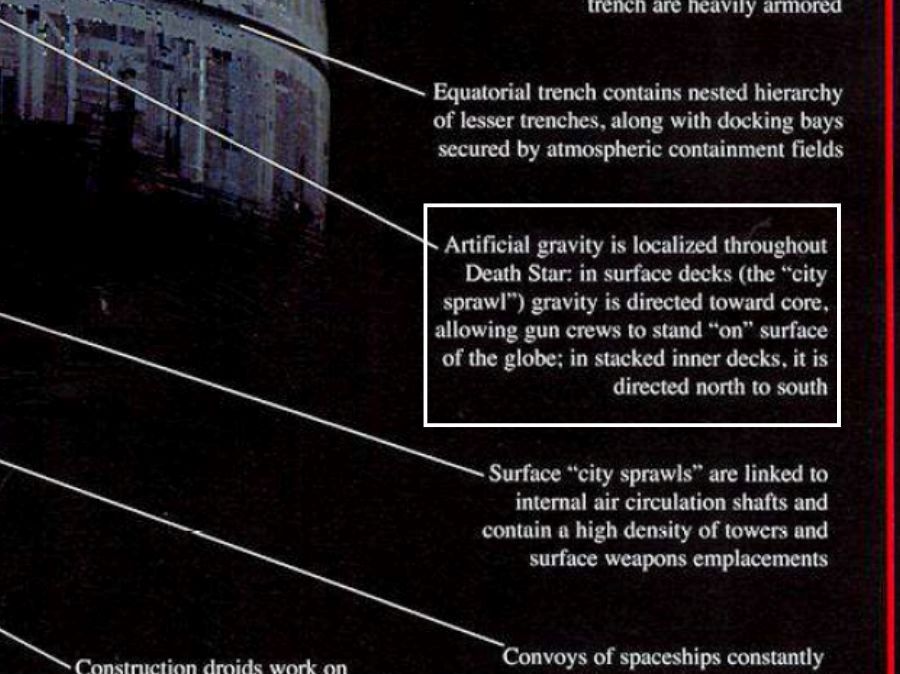As a regular person, we see how gravity works on a planet, essentially pulling everything towards the center.
However, our question here is: how does gravity work on the Death Star?
Is it like a planet or more like a battle station with multiple layers of floors?
Based on the information I’ve gathered, I believe the Death Star’s gravity functions as shown in the diagram below, and both depictions are correct.
This means that gravity on the Death Star is generated locally.
Here is why!
The Construction of the Death Star

For the stack up floors idea, yes the Death Star’s gravity does work like that, however, it is only work when the officer or the stormtrooper walk inside the stacked inner decks of the Death Star.
In Star Wars: Revenge of the Sith, we see Darth Vader and Palpatine standing on a Star Destroyer, watching the construction of the Death Star.
I’ll leave a video link below for you to follow easily.
From the video, we see that the Death Star is not being built from the inside out or from the outside in.
And it clearly shows different floors being constructed.
So, what happens when you walk on the surface of the Death Star? How does gravity work in that case?
As I mentioned before, gravity on the Death Star is generated locally.
When you stand on the surface of the Death Star, you are pulled towards its center, just like how gravity works on Earth or any other planet.
Where is the proof for these points?
In the book “Inside the Worlds of Star Wars Trilogy: The Ultimate Guide to the Incredible Locations of Episodes IV, V, and VI,” it is stated that “Artificial gravity is localized throughout the Death Star: in surface decks (the “city sprawl”) gravity is directed toward the core, allowing gun crews to stand ‘on’ the surface of the globe; in stacked inner decks it is directed north to south.”


